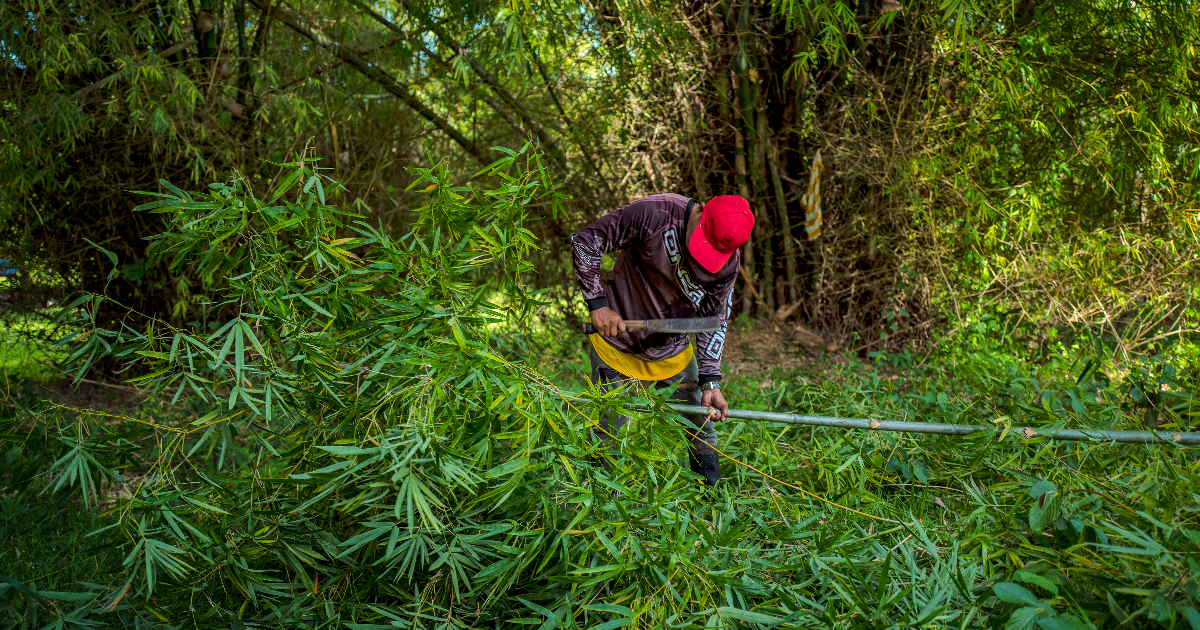
Bamboo vs. Climate Change: How This Plant Can Make a Difference
Global warming and deforestation have become chronic issues that demand immediate action. As we find alternative solutions, bamboo emerges as a compelling solution that not only finds application in housing but also contributes to environmental conservation.
Bamboo is a prominent example of a sustainable material that is being used in eco-friendly construction. Its rapid growth is the source of its remarkable sustainability, making it readily available compared to other construction materials. The abundance of bamboo further reduces market prices, making it a cost-effective building material. In addition, if the bamboo is properly treated and protected from the sun and rain then these structures can have a lifespan of 30 to 50 years. This longevity, combined with bamboo’s innate strength, allows it to withstand natural disasters such as earthquakes and strong winds. This durability ensures stability and also minimizes resource consumption over time.
In this article, we will demonstrate keyways how bamboo can help the earth mitigate and adapt to the impacts of climate change that we have today.
Astounding Growth Rate
Certain species of bamboo can grow more than three feet per day. In addition, a distinguishing feature of bamboo is its ability to regenerate quickly after harvesting. When bamboo is harvested, new branches grow from the plant’s existing roots without the need for additional planting or cultivation.
Provide Livelihood Opportunities
Bamboo provides diverse livelihood opportunities for communities especially on areas where it is abundant. Farmers and rural communities cultivate bamboo for commercial purposes, selling shoots, poles, and culms. Skilled artisans create exquisite bamboo handicrafts, while bamboo’s strength enables employment in construction for building houses and structures. The textile industry benefits from bamboo fibers as well, producing sustainable clothing and bedding. Bamboo farming generate income through propagation and sales. Bamboo’s versatility sustains livelihoods by providing income generation and employment across various sectors.
Sustainable Resource
The UN FAO’s estimation of an annual deforestation rate of 10 million hectares highlights the alarming reality of forests being cut down for various purposes. This emphasizes the urgent need to explore alternatives to conventional building materials. Bamboo, with its properties, serves as an ideal alternative. Opting for bamboo instead of traditional materials can alleviate the pressure on our forests and safeguard the diverse ecosystems they sustain.
One organization at the forefront of promoting the sustainable use of bamboo in construction is BASE. Their pioneering technology, known as Cement Bamboo Frame Technology, is a prime example of their commitment. Through this innovative approach, they have developed homes and special structures that are designed to be resilient in the face of various climatic challenges.
Base Bahay Foundation, Inc (BASE) is the pioneer of Cement-Bamboo Framework in the Philippines. BASE builds affordable and disaster-resilient structures using bamboo-based technology. Through continuous research in the Base Innovation Center (BIC), BASE is optimizing the technology and looking for new applications outside its standard model. BASE also offers training courses under its Bamboo Academy program to share the alternative building technologies, provide further knowledge about bamboo, and engage other institutions in sustainable construction. Learn more about BASE!
Alternative Building Technologies, Cement Bamboo Frame Technology, Sustainable Housing